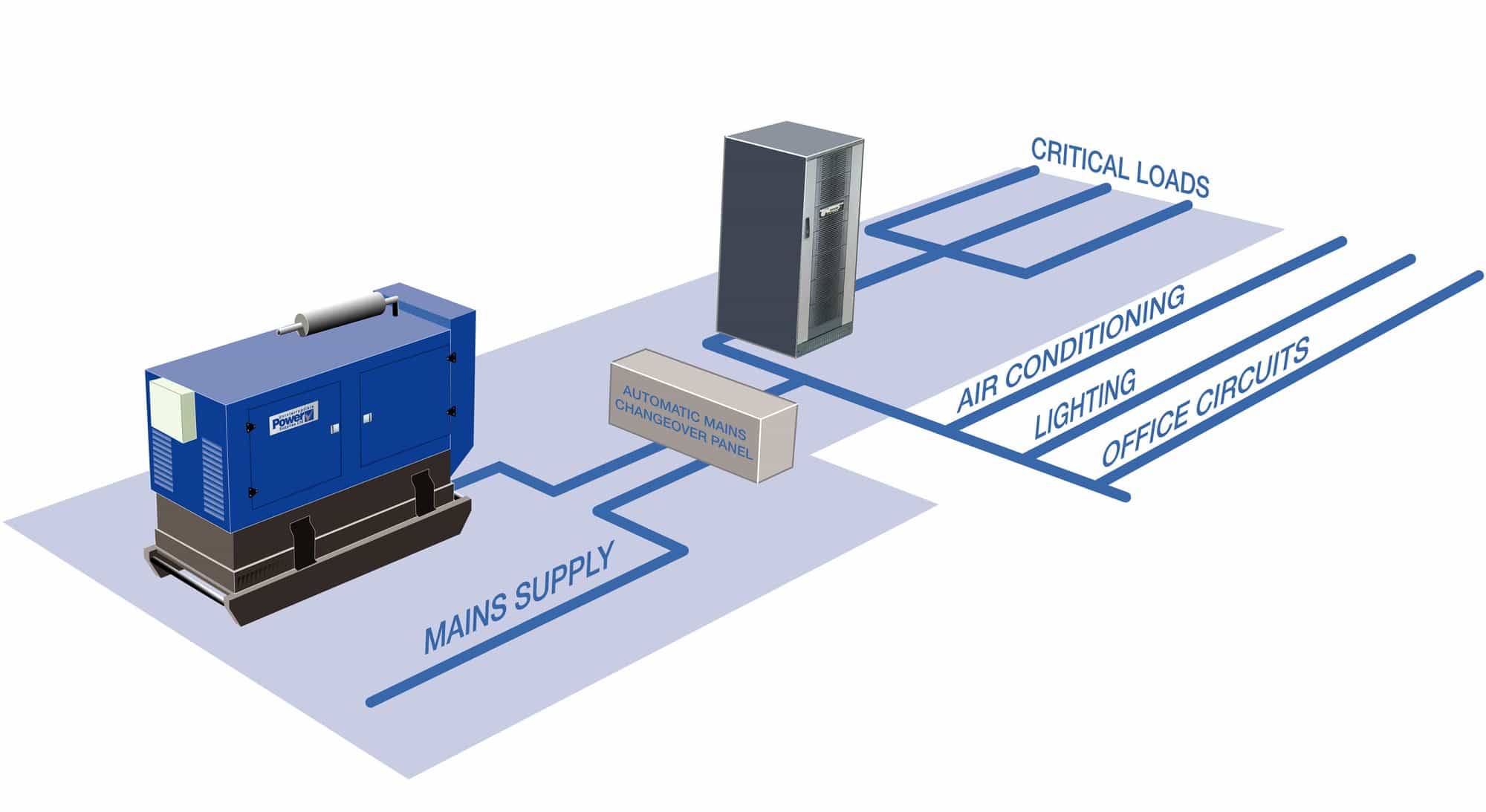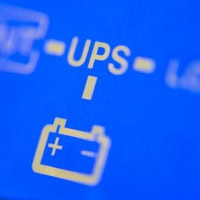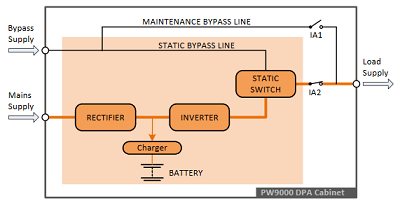Most organisations today recognise the critical role of their ICT resource, and of its need for a clean, protected incoming power supply. However, what happens during prolonged power outages? In some cases, where organisations can tolerate a loss of data processing ability for a while, a UPS alone is sufficient protection. It prevents damage to hardware and data by managing an orderly shutdown of the critical load if its battery autonomy is threatened.
In other situations – for example where online transactions are involved – damage prevention, though essential, is not sufficient; interruption of services to customers or other users cannot be tolerated. If so, the UPS system must be complemented by a standby generator with automatic mains failure (AMF) detection. During a mains failure, the battery autonomy allows the generator to start up in response to the AMF signal, stabilise, and be switched to the UPS input. With sufficient fuel, the generator can keep the load up and running until mains power is restored, whenever that happens.
Accordingly, an integrated UPS-generator combination can provide a comprehensive power protection solution, but only if the generator is correctly set up for its role, and fully compatible with its UPS partner. Below, we look at the factors to consider when deciding the right UPS power protection solution for your business.
Most standby generators use diesel engines similar to those in large lorries. Like their vehicle counterparts, these engines must be well-maintained, with adequate fuel and a healthy starting battery. Oil and coolant levels must also be maintained. Generators should be kept warm with mains-powered engine water heaters, keeping them always ready to start immediately on demand. The mains supply should be used to trickle-charge the starting battery.
The engine drives an alternator, which converts mechanical rotation into an electrical AC voltage. An Automatic Voltage Regulator (AVR) controls the amplitude and stability of this output voltage, while engine speed determines frequency. Stability is essential here, as UPS systems cannot synchronise with excessive frequency variation or rate of change (slew rate) without putting the load at risk.
The solution is to use electronic speed governors, which are more accurate and responsive than the earlier, lower-cost mechanical types. In fact, the generator should be designed specifically to drive a UPS system, and fully tested during commissioning. It should also be large enough to absorb most load variations, although it cannot compete with a utility generator’s size, inertia and ability to do this. In fact, most standby generators cannot accept 100% of their load rating as a single step; it is best not to introduce any load above 50% of the generator’s standby rating in this way.
Smooth operation also depends on careful AMF settings. To avoid the AMF signal starting the generator for every mains disturbance, it should not be initiated unless a time delay of typically 2 – 10 seconds elapses without normal power being restored. A similar delay should be used to prevent premature return from the generator back to the mains supply.
The generator’s environmental impact must be minimised. Measures to ensure safe fuel storage must be taken; legislation for this depends on the fuel storage container’s capacity, position on site and UK regional location.
Acoustic housings are necessary to limit audible noise output, especially if night operation is a possibility. Enough cooling air to remove the UPS generator’s heat output must be provided, along with a provision to vent exhaust gases responsibly.
Other factors beyond the scope of this article include planning permission, delivery, siting, mechanical and electrical installation and neutral switching. A good solution is to discuss your requirements with a power protection vendor experienced in supplying both UPS systems and standby generators, who can advise on issues related to each item individually and their operation as an integrated pair.





